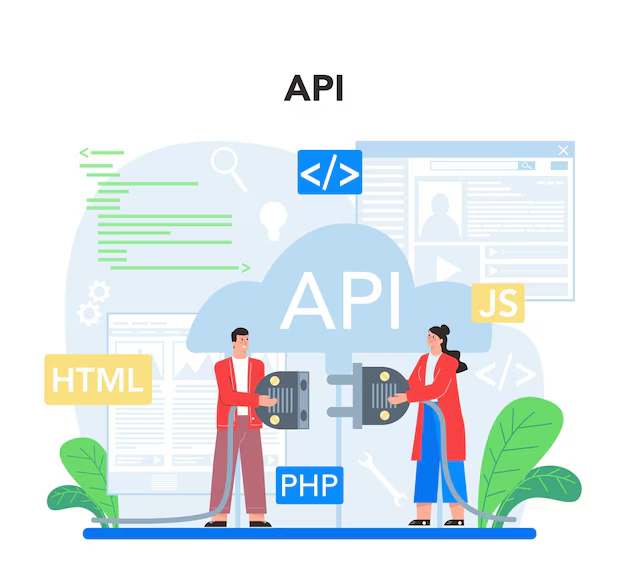Fetching and displaying data from an API is a fundamental task in modern React applications. With the evolution of React, fetching data has become more streamlined and offers multiple methods to make HTTP requests. In this guide, we’ll cover the steps to fetch and display data using React.
Setting Up the React Project
Before diving into API fetching, ensure you have a React project set up. You can create one using
-
npx create-react-app my-app
cd my-app
npm start
This initializes a new React project and runs a development server.
️ Step-by-Step: Fetching Data in React
1. Create State for Storing Data
Use the useState hook to create a state variable to store the fetched data.
javascript
const [data, setData] = useState([]);
2. Fetch API Data with useEffect
React’s useEffect hook ensures that data fetching happens when the component mounts. The fetch() function is used to retrieve data from the API.
javascript
useEffect(() => {
fetch('https://api.example.com/data')
.then(response => response.json())
.then(data => setData(data))
.catch(error => console.error('Error:', error));
}, []);
3. Display the Fetched Data
Once the data is fetched, it can be rendered in the JSX using the map() method:
return (
<div>
<ul>
{data.map(item => (
<li key={item.id}>{item.name}</li>
))}
</ul>
</div>
);
⚙️ Using Axios for Fetching Data
Although fetch() is the native browser API, many developers prefer using libraries like Axios because of its simplicity and powerful features. Here’s an example of using Axios:
Install Axios:
npm install axios
Fetching Data
useEffect(() => {
axios.get('https://api.example.com/data')
.then(response => setData(response.data))
.catch(error => console.error('Error:', error));
}, []);
Handling Edge Cases
- Loading States: It’s important to manage a loading state while the data is being fetched.
- Error Handling: Implementing proper error handling can enhance user experience.
Example:
const [loading, setLoading] = useState(true);
const [error, setError] = useState(null);
useEffect(() => {
fetch('https://api.example.com/data')
.then(response => response.json())
.then(data => {
setData(data);
setLoading(false);
})
.catch(error => {
setError(error);
setLoading(false);
});
}, []);
Conclusion
Fetching and displaying data from APIs in React is essential for creating dynamic web applications. Whether using the fetch() API or a library like Axios, the process involves defining a state to store data, making the request, and rendering the results. By understanding these steps and handling edge cases like loading and errors, you can build responsive, data-driven apps efficiently.
❓ Frequently Asked Questions
1. How do I set up a React project to start fetching API data?
To set up a React project, run the following commands:
npx create-react-app my-app
cd my-app
npm start
This initializes the project and starts a development server.
2. How do I store fetched data in React?
You can store fetched data using the useState hook. Example:
const [data, setData] = useState([]);
3. How can I fetch data in React when the component mounts?
Use the useEffect hook to fetch data when the component is mounted:
useEffect(() => {
fetch('https://api.example.com/data')
.then(response => response.json())
.then(data => setData(data))
.catch(error => console.error('Error:', error));
}, []);
4. What is the purpose of using the map() method in React when rendering data?
The map() method is used to loop through the fetched data array and render each item in the JSX. For example:
<ul>
{data.map(item => (
<li key={item.id}>{item.name}</li>
))}
</ul>
5. Why would I use Axios instead of the fetch API?
Many developers prefer Axios because it simplifies HTTP requests, offers more features, and supports older browsers more consistently.
6. How do I install Axios in my React project?
To install Axios, run:
npm install axios
7. How do I fetch data using Axios in React?
With Axios, you can fetch data like this:
useEffect(() => {
axios.get('https://api.example.com/data')
.then(response => setData(response.data))
.catch(error => console.error('Error:', error));
}, []);
8. How can I handle loading states when fetching data in React?
You can manage loading states by creating a loading variable with useState. For example:
const [loading, setLoading] = useState(true);
useEffect(() => {
fetch(‘https://api.example.com/data’)
.then(response => response.json())
.then(data => {
setData(data);
setLoading(false);
});
}, []);
9. How do I handle errors when fetching data?
To handle errors, define an error state and update it in case the request fails:
const [error, setError] = useState(null);
useEffect(() => {
fetch(‘https://api.example.com/data’)
.catch(error => {
setError(error);
setLoading(false);
});
}, []);
10. Why is it important to handle edge cases like loading and errors in API fetching?
Handling edge cases like loading and errors ensures that users are informed about the current state of data fetching and provides a smoother user experience in cases where data retrieval fails or takes time.
